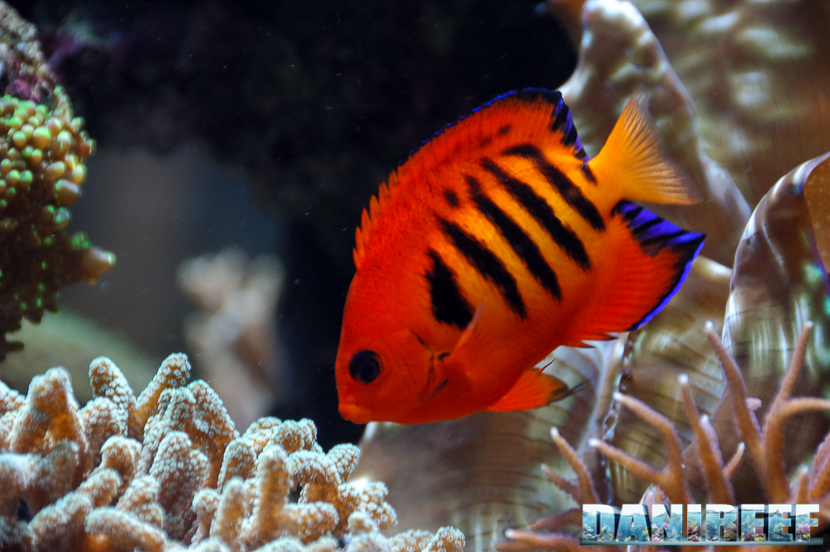
Here we are with the third episode about species that can thrive in a marine aquarium. Today we’re talking about the dwarf angel fish, or the Centropyge.
Introduction
I’ve always loved aquariums full of fish, as if you were diving in tropical seas. I’ve always had a lot of them, the important thing is knowing which one you can insert and respecting them, obviously.
At the end, it’s all an exercise of equilibrium and proportions. A big fish in a small aquarium is not that nice to see and it’ll also make your aquarium appear even smaller than it is, wherever the beauty of the fish. Moreover, a lot of fish that don’t fit for their size, for example some surgeonfish, become very aggressive and can attack other fish, they can get sick frequently, infecting then the other specimens too. Then you have to consider the biological niches, for which it would be totally useless, for example, insert 20 angelfish and then complain that the no one swims in the upper part of the aquarium. Then you have to consider the colors, because some fish get very aggressive towards specimens with similar liveries. And schooling fish have to stay in a school… and so on. But let’s continue with order.
Is there a maximum number of fish that can be kept in a marine aquarium? No, there isn’t. If you want to obtain the maximum from your aquarium, you have to study, know and respect the fish. Choose them wisely.
The introduction is the same for all the articles of this series
The Centropyge or dwarf angel fish
The Centropyge belongs to the family Pomacanthidae, but due to their characteristics they have to be dealt with differently. They’re small angel fish, and they share habits and behaviors with their bigger relatives. But different from them, they stay very small and they’re perfect for marine aquariums with small dimensions. Well… almost perfect. But we’ll see why later.
They’re very colorful fish, rarely grow over 12 cm long, and they’re very active and tireless swimmers. They usually don’t swim in the open sea, so they’ll prefer to stay close or inside the rocks.
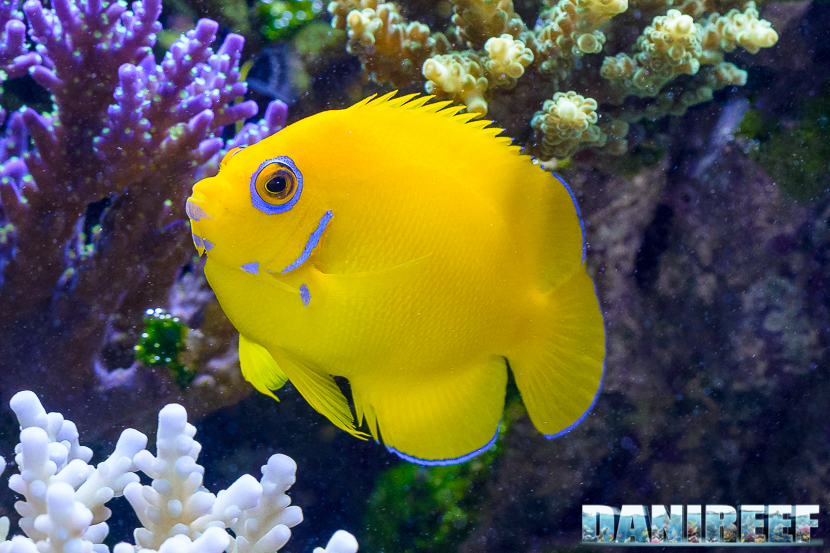
They’re solitary animals and very combative against similar fish, especially if they’re other Centropyge. Other than that, they’re calm and little aggressive. They tolerate fish of the same species, as long as they’re different colors. The Centropyge could be a little troublesome to to feed, but ask the seller to see the fish while eating before you buy it, because a fish that doesn’t eat could not only be problematic, but also not in good health. They all come from the Indopacific and, except from the Centropyge resplendens, none have been found in the Atlantic Ocean. Generally they can be inserted in marine aquariums of at least 100 liters, even if, as always, you have to check the specific preferences for each species because there are always exceptions.
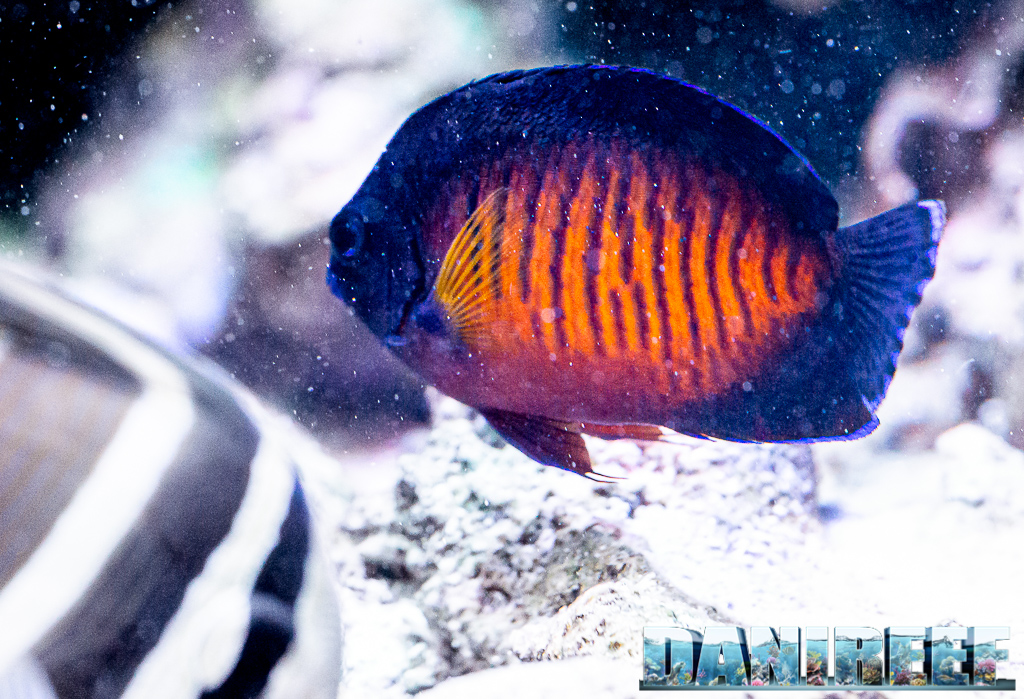
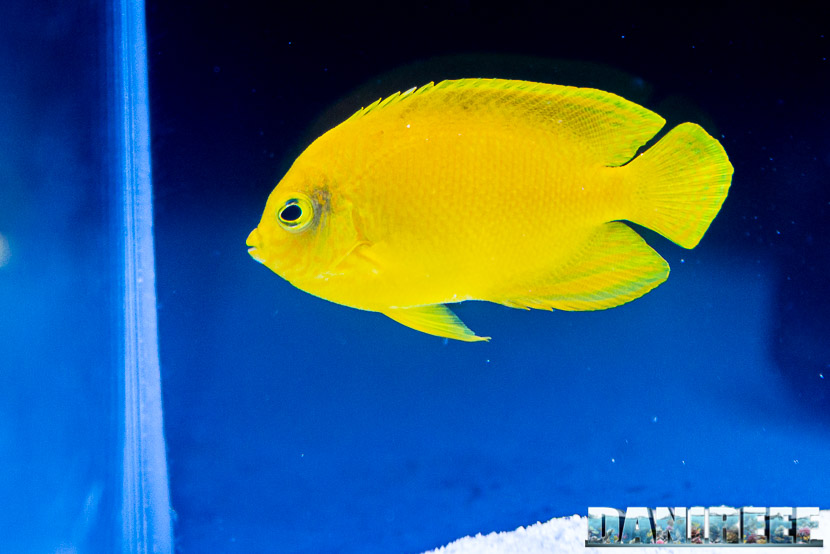
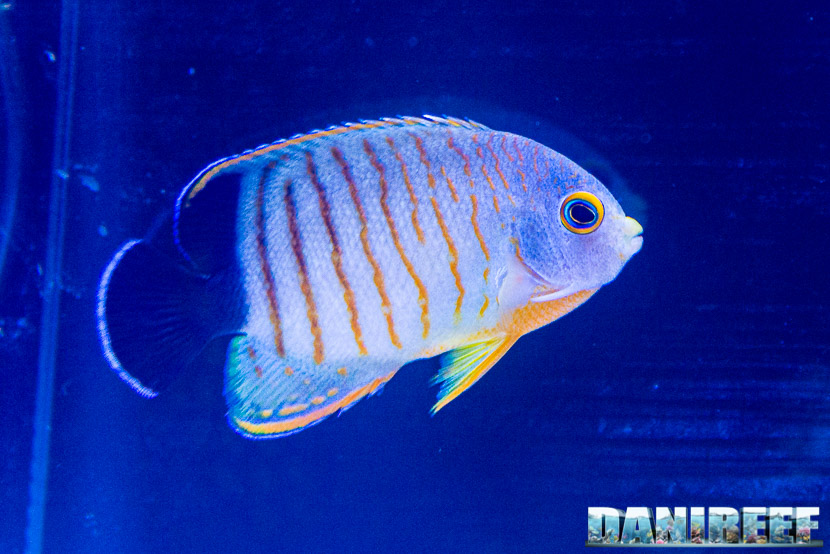
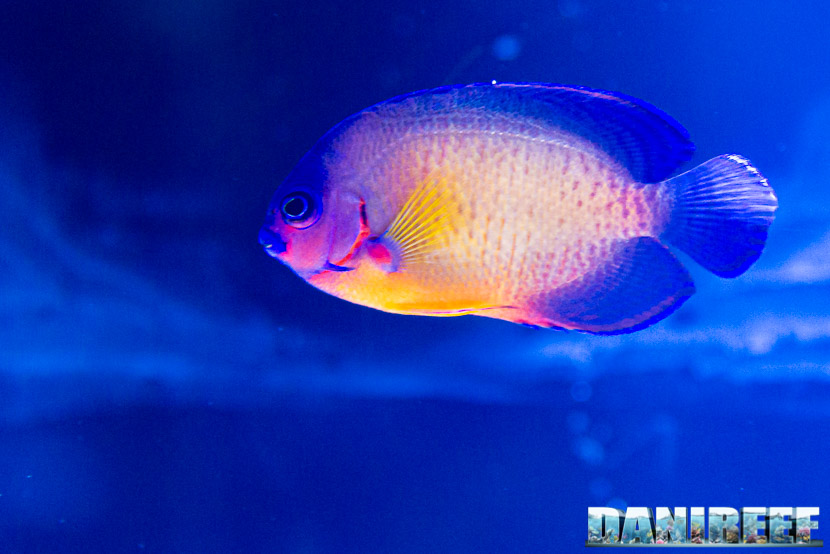
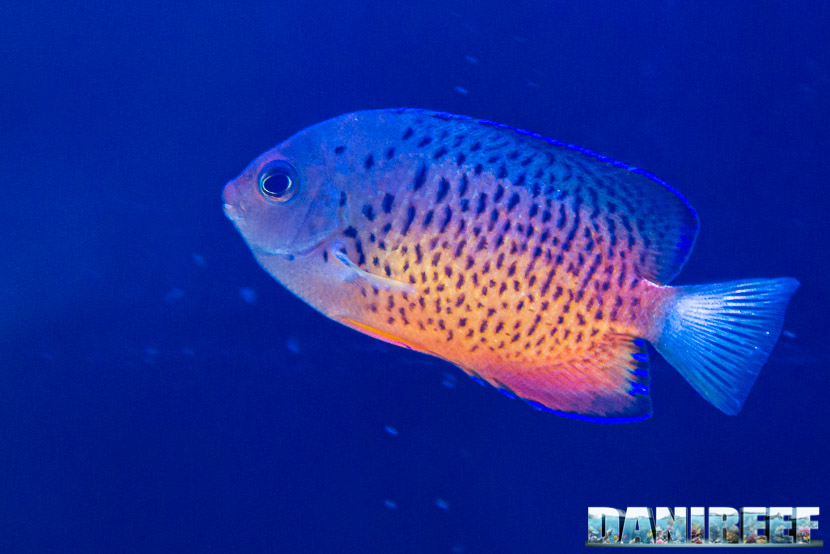
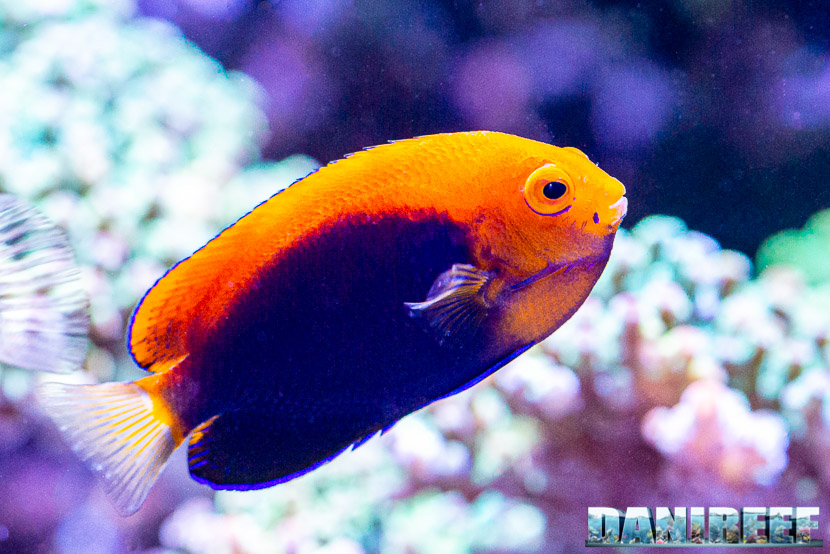
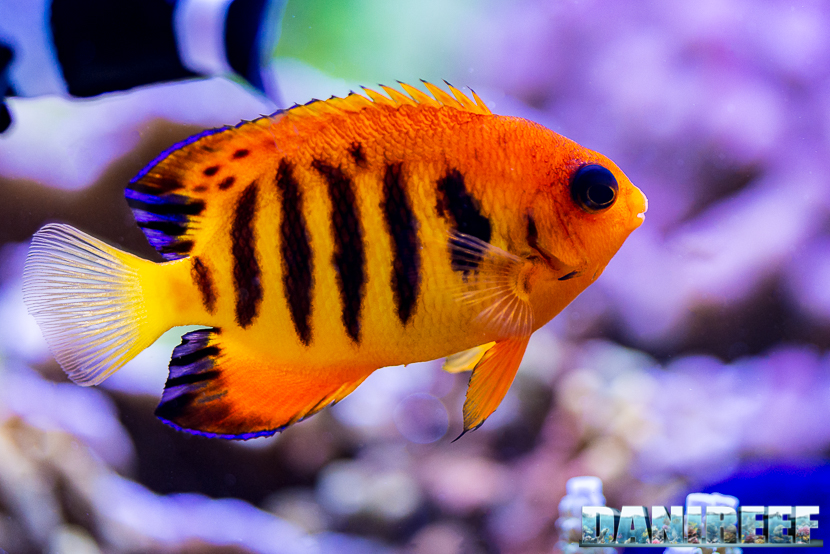

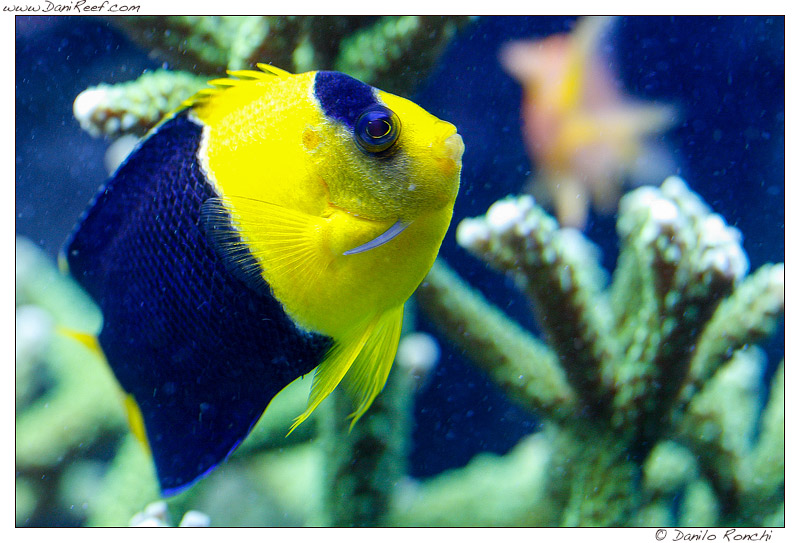
The main problem with Centropyge
These roses, of course, have thorns. The Centropyge, unfortunately, like other angel fish, really love sponges. They can be selective about their likings, but they often love to try the polyps of corals, the longest ones in particular, so many long polyp hard corals and some soft corals are at risk. I’d like to say that if they’re well feed the possibility isn’t very high, but it may always be, even if they’ve been in the same aquarium for years. One day they decide to try this beautiful Acanthastrea and then it’s a nightmare. But in general, small poly hard corals (SPS) can do ok.
Speaking of probability, considering that every animal is different, we can say that the Centropyge bicolor is the riskiest one, while the Acanthops is safer for your reef. I have to say I’ve taken both together for years and without any damage for the corals. Keeping them well fed is very helpful.
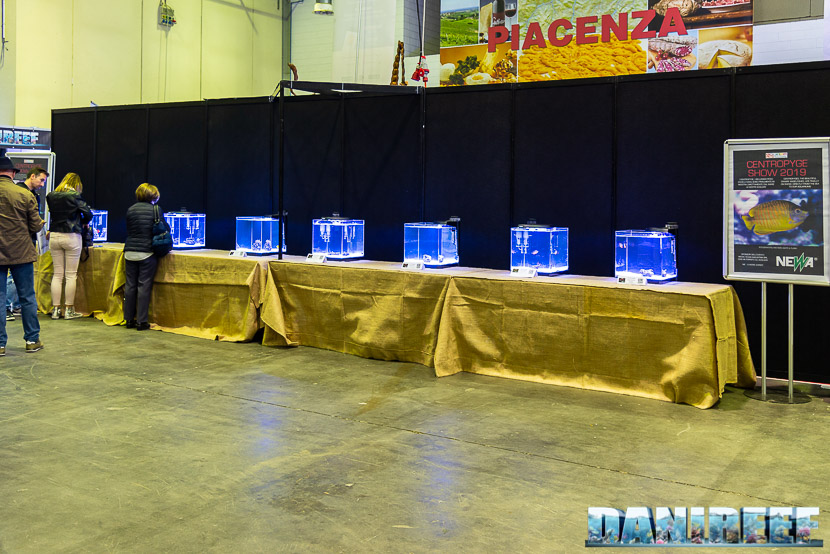
In Italy, there was a showing of Centroypge organized during PetsFestival 2019, here is the article with pictures of and comments about the day.
Amount of Space Needed
Considering the habits of these beautiful fish, we can say that: the Centropyge bicolor, which is one of the biggest, would be better in a 200 liter aquarium; the Centropyge loriculus only needs 120 liters; and the Acanthops, 100 liters. The flavissimus and the heraldi need 120 liters; the ferrugata and the bispinosus need 100 liters, and the eibli needs 150 liters.
From the same series:
We’re currently writing some articles on the various families of fish, and we we’re going to keeps together the links for the articles about fish of the same series. Is there a particular family that you’d like to learn more about?
- Surgeonfish in marine aquariums: how many and why?
- Synchiropus in marine quariums: which ones and how many?
- Centropyge in marine aquariums: which ones and how many?
[Translated by Agnese Poggi]










0 Comments